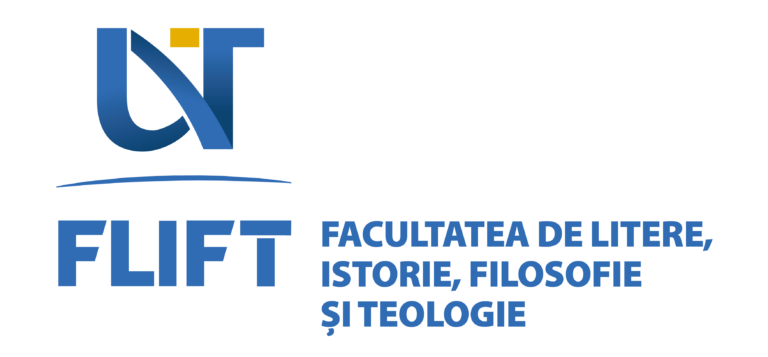
- This event has passed.
CALL FOR PAPERS
BAS / BRITISH AND AMERICAN STUDIES JOURNAL 2026
GOTHIC MATERNITIES:
TRADITIONAL vs CURRENT VISIONS IN LITERATURE, CINEMA AND OTHER ARTS
However, as Adrienne Rich (1976) pointed out, in contrast to more traditional motherhood, which can be experienced as a patriarchal institution within this type of fiction, motherhood defined and centered on women can be understood as an empowering experience for women, which later paved the way for matricentric feminism (O’Reilly, 2016). In short, while motherhood as an institution is often a site of male-defined oppression, women’s own maternal experiences can become a source of power (O’Reilly, 2021). It is, therefore, essential to look into the representation of themes such as gestation, childbirth, breastfeeding, and the physical, psychological, and emotional changes that the gestating mother undergoes after childbirth, as well as the various forms of motherhood and gestating bodies (consider, for instance, the masterfully depicted confrontation between Sigourney Weaver and the creature in the 1979 movie Alien: The Eighth Passenger, 1979).
The relationship between mothers and their progenies might be fraught with myriad uncertainties, fears, and sometimes outright hatred. These controversial aspects of childbearing, childbirth, and childrearing are addressed by countless unnatural creations, violent births, and terrified women—depicted as doubly vulnerable and trapped in situations of extreme danger (Harrington, 2018: 87). This preoccupation with maternal fear and monstrosity aligns with the Gothic tradition’s continued engagement in the Othering of the mother (Carpenter 2016: 7), providing a compelling lens for exploring the uncanny and the abject (Arnold 2013; Creed 1993; Oliver 2012). As Kristeva suggests in Powers of Horror, this process of othering reflects a deeper cultural anxiety; she (1982: 73) describes the ‘archaic mother’ as a force of ‘generative power’ that patrilineal structures try hard to suppress. As a consequence, monstrous mothers—whether phallic, castrating, all-consuming, and absent—populate the Gothic imagination, from fiction to movies and video games. Yet, despite their ubiquity, this oppressive maternal figure has often gone unnoticed or deliberately ignored by scholars. Her existence resists traditional interpretations, challenging the widely accepted idea of maternal instinct (Williams, 2025: 1).
Moreover, contemporary Gothic art, by allowing projection into other universes and times, imagining various interpersonal relationships, and questioning the boundaries of biology and gender, inevitably engages with various visions of motherhood – some utopian, while others, dystopian – thus opening the door to the exploration of new possibilities. It is in this fertile terrain that, in addition to the previously mentioned themes, other pressing issues also find space for exploration, such as reproductive biotechnology, ectogenesis, cloning, xenobiology, grafts with living beings or artificial entities, microchimerism, and a long list of others that current fiction seems eager to depict (Marinovich, 1994: 189–205; Anolik, 2003: 25–43).
Therefore, we invite writers, researchers, scholars, and all those who wish to contribute to this volume dedicated to new visions of the Gothic. Or are they not so new?
REFERENCES
Allen, Jeffner. 1984. “Motherhood: The Annihilation of Women” in Joyce Trebilcot (ed). Mothering: Essays in Feminist Theory. Lanham: Roman and Allanheld, pp. 315–30.
Anolik, Ruth Bienstock. 2003. “The Missing Mother: The Meanings of Maternal Absence in the Gothic Mode” in Modern Language Studies, 33 (1/2), pp. 25–43. https://doi.org/10.2307/3195306
Arnold, Sarah. 2013. Maternal Horror Film: Melodrama and Motherhood. Basingstoke: Palgrave Macmillan.
Carpenter, Ginette. 2016. “Mothers and Others” in Avril Horner, Sue Zlosnik, Andrew Smith and William Hughes (eds.). Women and the Gothic: An Edinburgh Companion. Edinburgh: Edinburgh University Press, pp. 44-59.
Creed, Barbara. 1993. The Monstrous-Feminine: Film, Feminism, Psychoanalysis. London: Routledge.
Firestone, Shulamith. 1970. The Dialectics of Sex: The Case for Feminist Revolution. New York: Morrow.
Harrington, Erin. 2018. Women, Monstrosity and Horror Film: Gynaehorror. London: Routledge.
Kristeva, Julia. 1982. Powers of Horror: An Essay on Abjection. Translated by L.S. Roudiez, New York: Columbia University Press.
Marinovich, Sarolta. 1994. “The discourse of the other: Female gothic in contemporary women’s writing” in Neohelicon 21, pp. 189–205. https://doi.org/10.1007/BF02093047
O’Reilly, Andrea. 2016. Matricentric Feminism: Theory, Activism, and Practice. Coe Hill: Demeter Press.
O’Reilly, Andrea. 2021. Maternal Theory: The Essential Readings. Coe Hill: Demeter Press.
Oliver, Kelly. 2012. Knock Me Up, Knock Me Down: Images of Pregnancy in Hollywood Films. New York: Columbia University Press.
Rich, Adrienne. 1976. Of Woman Born: Motherhood as Experience and Institution. New York: W.W. Norton.
Russ, Joanna. 2007. The Country You Have Never Seen: Essays and Reviews. Liverpool: Liverpool University Press.
Williams, Sara. 2025. The Maternal Gaze in the Gothic. New York: Palgrave Macmillan.
Contributions on this topic should be submitted to bas.journal@gmail.com by 1 October 2025. They should observe the general instructions provided on the BAS site (https://bas.journals.uvt.ro/ Instructions to authors)
The 2026 issue will also include, as usual, a chapter of papers on various linguistic issues.
Call for papers (pdf version)
